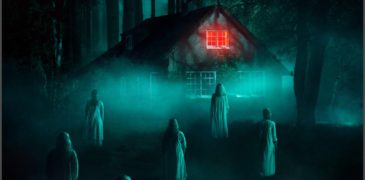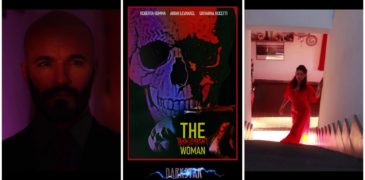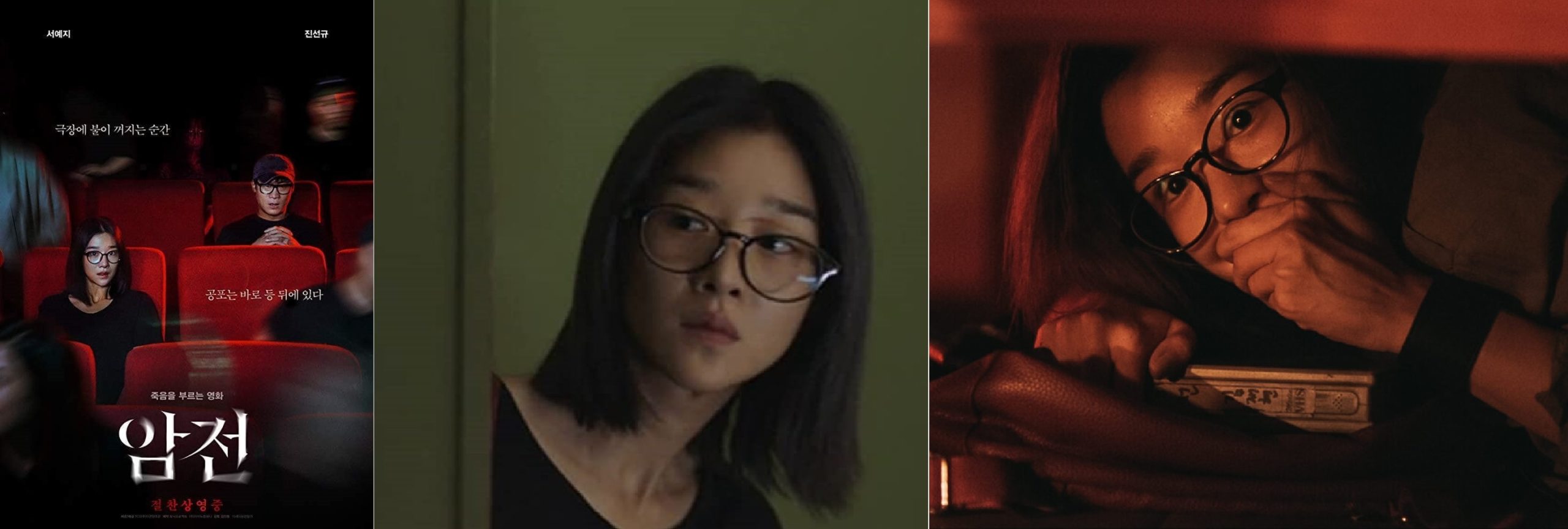
Warning: Do Not Play is a South-Korean horror that can proudly stand among the great Asian movies from this decade with a focus on filmmaking, ‘One Cut Of The Dead‘ and ‘The Kirishima Thing‘ among them. It is essentially a ghost story spanning decades which doubles as a cursed-object movie featuring frequently disturbing imagery – mostly of characters in a catatonic state inflicting self-harm – and while the scares can be bare-bones at times, the movie works best as a metaphor for the worst impulses of filmmakers today: how they sometimes end up casually exploiting the suffering of others and misappropriate their stories in order to further their own image or to simply get ahead. On the brighter side, it also demonstrates how cinema can be a beacon of hope, making films an act of salvation, and how just pointing a camera at someone and shooting can be the best possible decision.
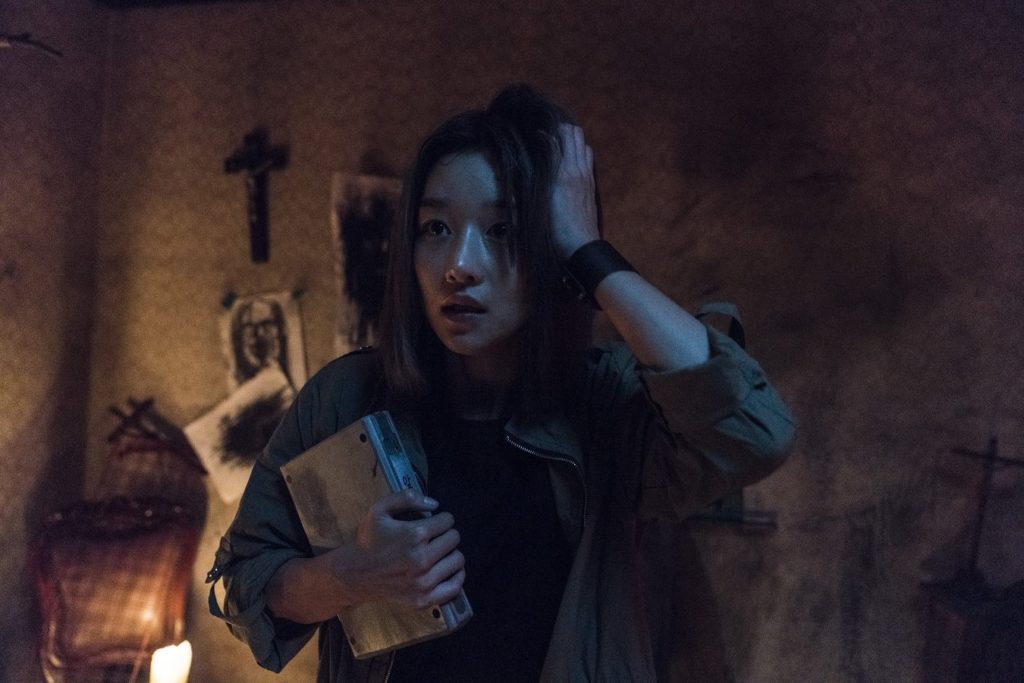
When we first meet Mi-Jung, she’s having a nightmare of herself being alone in a movie theater, and she slowly wakes up and sees a blinking eye on her phone’s cracked screen. As if to foreshadow the movie’s themes, and its structure, this image is a great sum-up of the whole story that is to come: it turns out that Mi-Jung is still dreaming, and when she wakes up for real, we get acquainted to her real plight: she’s a horror filmmaker under heavy stress because of a looming deadline; if she can’t come up with a scary concept for her newest project in two weeks, she and the whole team will lose the gig. When she hears about an urban legend concerning a film supposedly directed by a ghost that caused walkouts and heart-attacks, she travels to Daejeon to find it.
Mi-Jung is immediately likeable, but she can be immensely manipulative as well. She will have her way no matter what. After she doesn’t get anywhere with the film university staff, she meets three male film-school students in a bar, chatting about Christopher Nolan and Denis Villeneuve (the movie uses intertextuality to great effect, and its approach feels universal – it’s a story that can be placed into another geographical area without it losing much of its meaning: one of the funniest lines is ‘Your work suffers because you just can’t accept Nolan!’, but the sleek cinematography that can feel like a tour-guide to a haunted house, and the stunningly rich color palette are there for diehard Asian cinema fans to enjoy). She promises to grant them any wish if they can come up with a scary story from the Daejeon region. ‘ANY wish?’, one of them replies, and they start arguing among themselves until all three end up sharing the same story, one related to the same ‘haunted’ film from before.
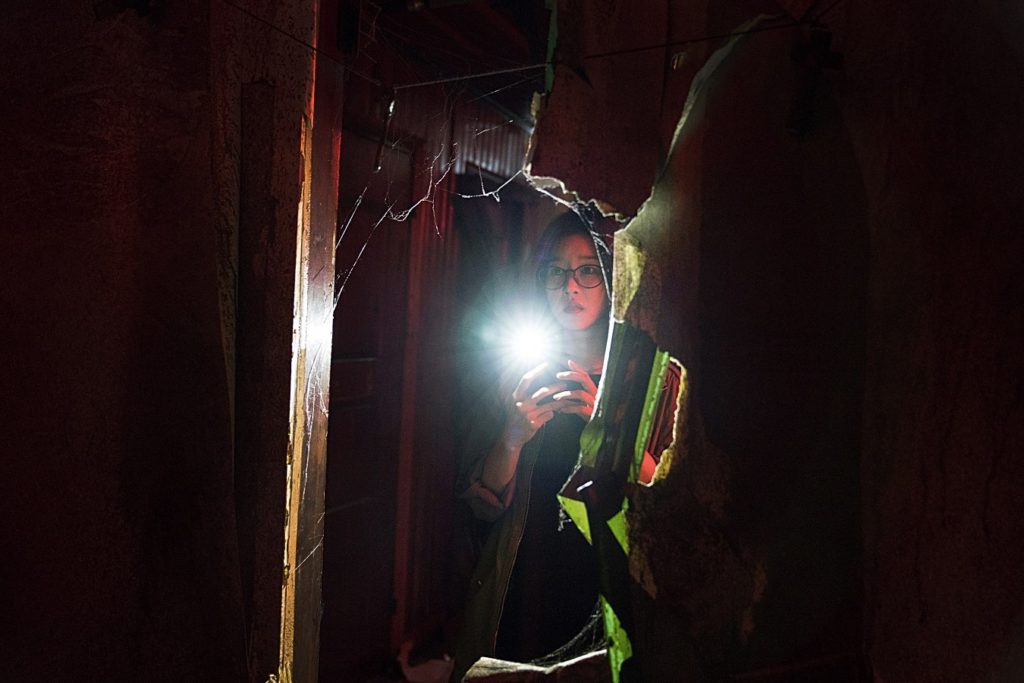
The protagonist is no stranger to stealing either. After getting her hands on a clip from the movie, she manages to track down the director and plans to get the full version somehow. What happens in the second act, after the more ‘investigating an urban legend’ feel of the first one, can seem like standard Asian horror: there are definitely some 10 to 15 minutes that feel too minimal, too focused on jump-scares rather than on the actual characters, as the true nature of the film comes into play and Mi-Jung has to fight for her life. What she actually does is just walk around slowly with bated breath while the film is teasing the viewer with the obvious scare waiting just around the corner, and while that can be a plus for atmosphere, it also clashes with what came before and might lose some viewers.
But worry not: just stick with it. It not only recovers from almost having devolved into a standard, low to mid-tied Asian horror, but it also ends up being an excellent example of a frame story, while perfectly using the ‘show, don’t tell’ principle (it includes found-footage elements to tell the tale of the cursed film, and makes the characters behind the original movie feel like actual people, by using clever parallels between them and Mi-Jung) and benefiting from some truly creative camerawork. It never ever tells you that it’s about filmmakers exploiting real people and their suffering for personal gain, becoming more distanced from reality and their own humanity – it just lets you witness that first-hand with almost every scene, and carries multiple meanings.
The best thing about the movie, besides its visuals and storytelling, is the character development. The original film director is a former shell of himself because of past events, and Mi-Jung’s transformation in the film’s climax occurs within a split-second – a result of her survival instincts, but also the fact that she might be different from the ‘get that footage no matter what’ school of thought. (Whether she truly changes or is just more clever and devious than the other characters and finds a way to justify her behavior, of if she chooses to just ignore the past, that’s up for interpretation.) As such, the movie illustrates how the current generation of directors can borrow from what came before them, ranging from gentle homage to blatant plagiarism, but can also subvert and refocus.
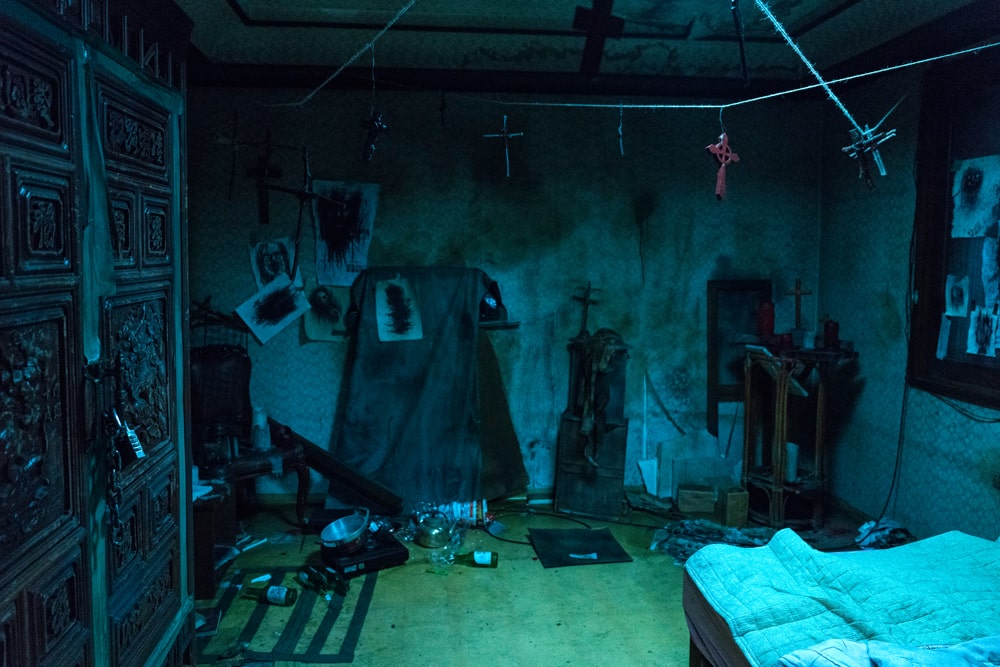
Like the character development and what it actually signifies in the larger picture, the film’s twist ending can be interpreted in a lot of ways: it serves as a cautionary tale for the viewer, but also perfectly illustrates what exactly Mi-Jung has lost in her journey of recovering the movie ‘Missing‘ and forcing her way into the director’s seat. As such, it is a pitch-perfect ending to a film that manages – in just 86 minutes – to mix urban legends with curses and angry ghosts, while rarely letting go of its characters, their ‘inner world’ and their journey. The film’s structure and approach to scares can be similar to that of ‘Ringu‘ or ‘Ju-On‘, but the whole package feels closer to underappreciated, but ambitious J-horror oddities from before 2010 (like ‘Orochi‘) and the new wave of Western horror movies, because of its metaphorical aspects. Seo Ye-Ji delivers a breakthrough performance here, and the fact that it almost works as a straight-up scary movie – if you choose to ignore the subtext – is a result of director Kim Jin-Won’s ambitious grasp.

Warning: Do Not Play can be seen on Shudder, or acquired from major VOD platforms, and comes highly recommended.
More Film Reviews
Moloch, the 2022 Dutch folk horror, arrived on Shudder early this month. The second feature directed by Nico Van Den Bink stars Sallie Harmsen, alongside Alexandre Willaume, and follows Betriek,… RevBarely a year after Neil Marshall’s first big-budget Hollywood feature, Hellboy (2019), failed to earn him a box office success, he has returned to his horror roots with the much… Sparked by the death of her partner Noah, Lilith is struggling with her mental health and has succumbed to a deep depression that affects all aspects of her life. Fighting… We previously had the chance to check out Thomas Burke’s short film Camping Fun, a quick dive into a small cult that showed that Burke had the knack to channel… There have been several films made about the Japanese urban legend known as Hitori Kakurenbo. There are also several ways that the title has been presented in English: hide and… The Transparent Woman is a 2015 Italian Giallo mystery, written and directed by Domiziano Christpharo. No stranger to Italian exploitation cinema, Domiziano Christpharo is known for his long list of…Moloch (2022) Film Review
The Reckoning Review (2020) – Neil Marshall’s Return to Horror
The Awakening of Lilith (2021) Film Review – The Excruciating Weight of Loss
SHC: Freak Accident (2022) Short Film Review – I’m Burning Up!
Creepy Hide and Seek (2009) Film Review – The Sleazier Side of a Famed Urban Legend
The Transparent Woman (2015) Film Review – Modern Day Giallo
